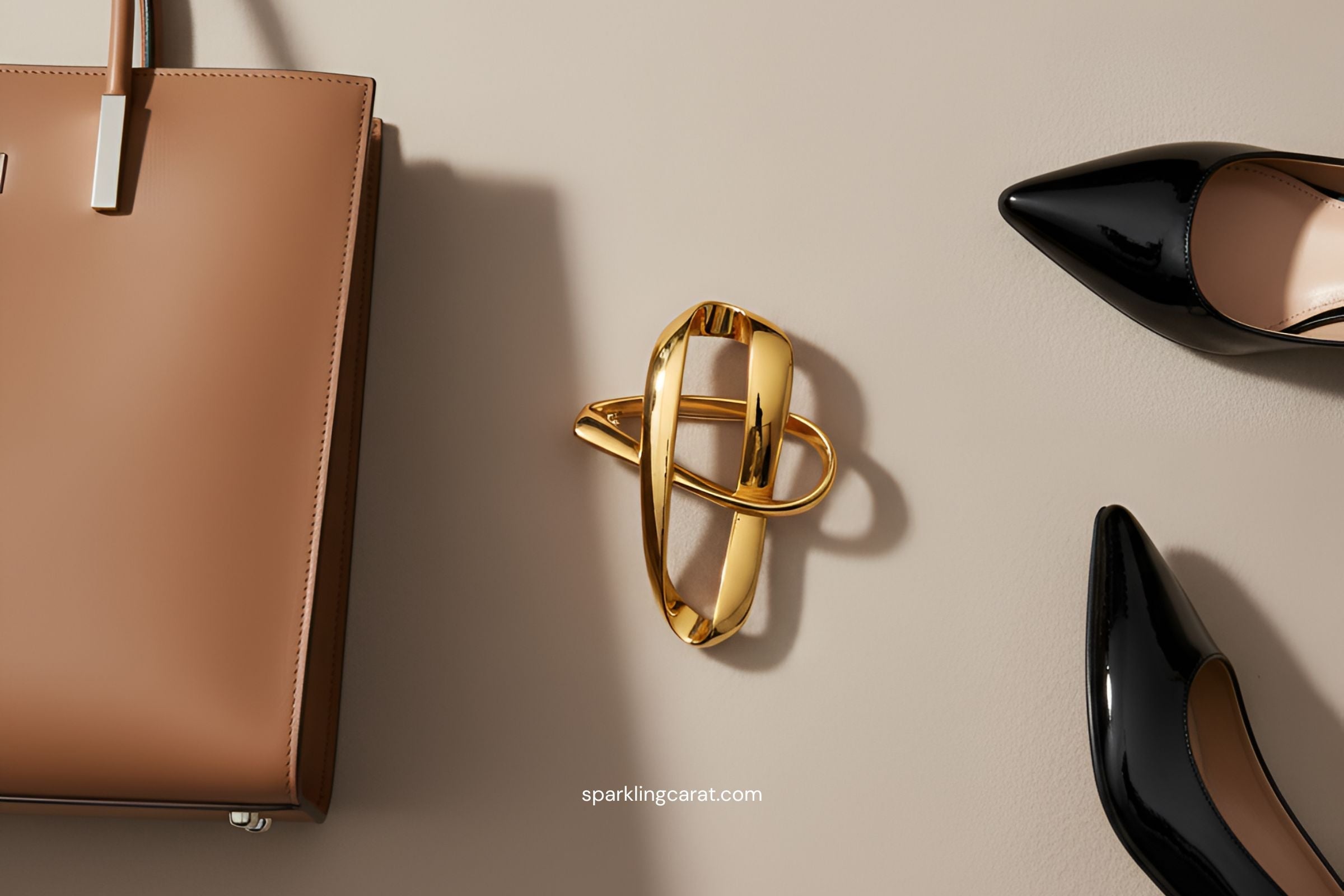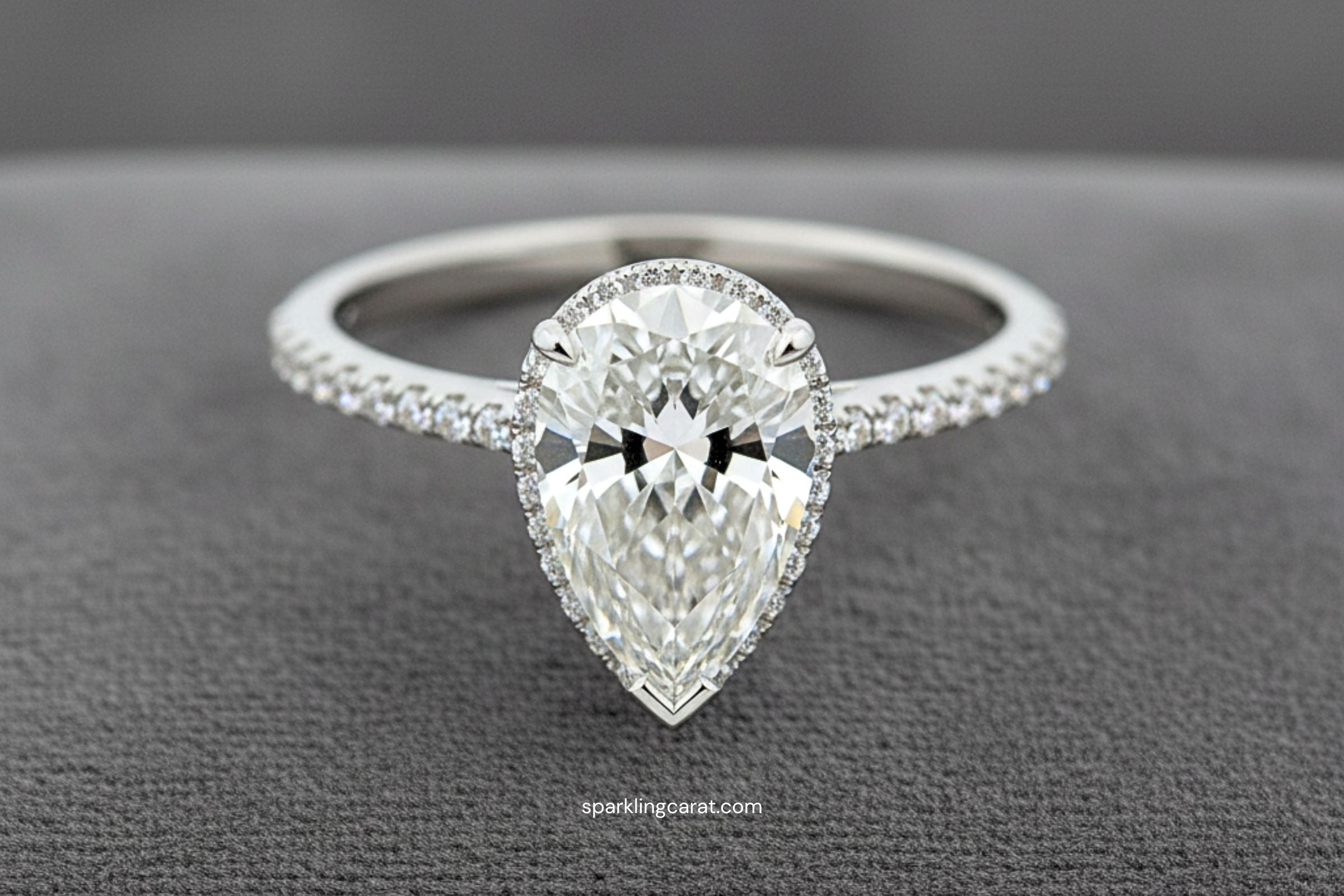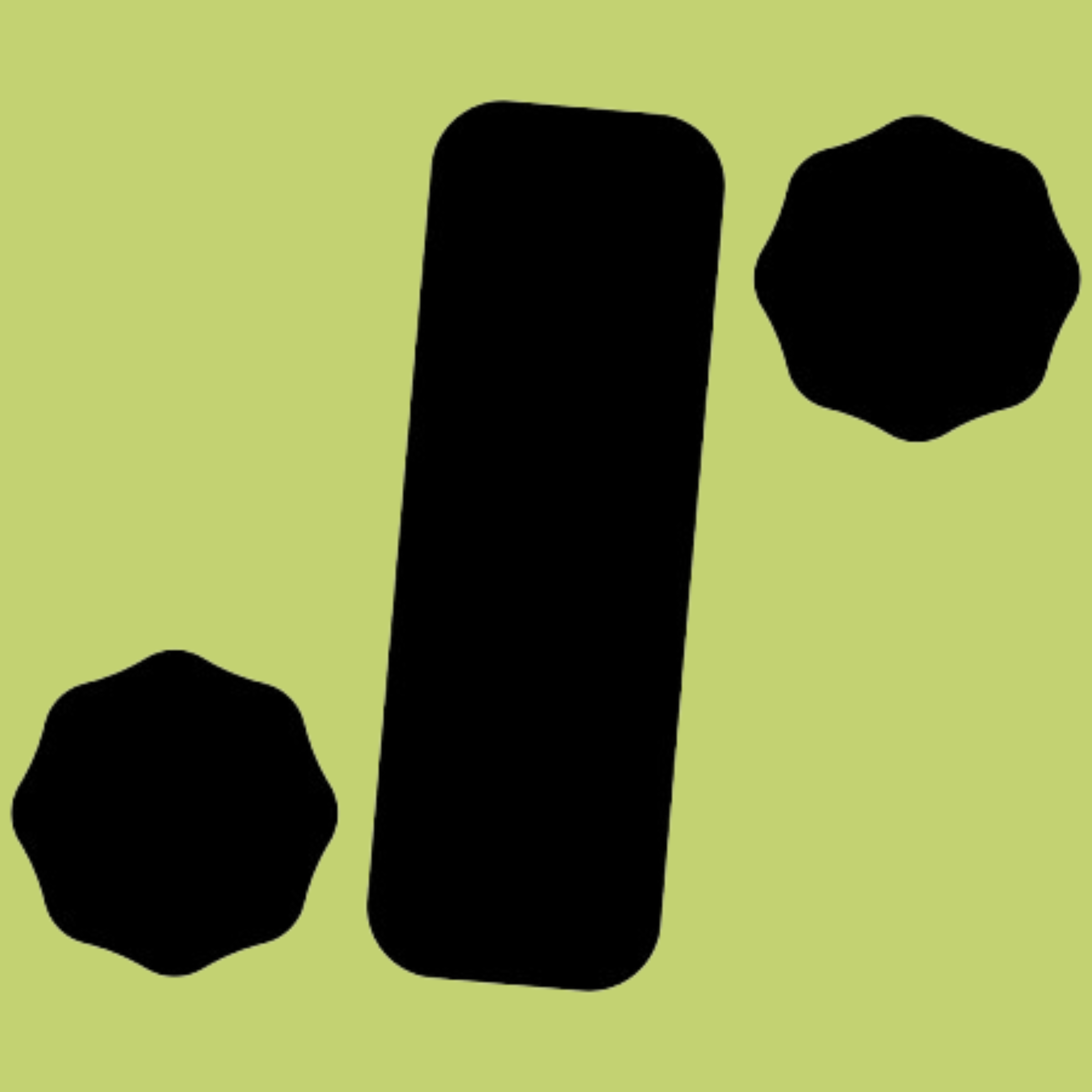Old Mine Cut Diamonds Surge: What Makes This 18th-Century Style So Searched in 2025
In 2025 a centuries-old diamond shape is enjoying a moment in the sun. Searches, social posts, and auction house headlines are all pointing to a fresh appetite for Old Mine cut diamonds, hand-cut stones with chunky facets, high crowns and a warm, candlelight-friendly glow. What once lived primarily in museum cases and estate collections is now showing up on red carpets, engagement announcements, and bespoke studio catalogs.
Why has this antique cut caught on now? The answer is cultural and technical: celebrity ring reveals and high-profile auctions have amplified interest, while a modern hunger for individuality, sustainability and tactile craft dovetails perfectly with the Old Mine cut’s uneven, human-made charm. Designers and brands are reframing these stones as romantic, ethical and unmistakably personal choices, alternatives to the clinical fire of modern brilliant cuts. In this article we’ll explain what defines an Old Mine cut, how it differs from other antique cuts, why it looks different under contemporary light, and what buyers, designers and collectors should know if they’re thinking about adopting the trend. Along the way we’ll show how the revival intersects with sustainability, lab-grown options, and bridal styling for 2025.
What is an Old Mine cut diamond? The anatomy of an antique sparkle
The Old Mine cut predates modern machine-guided faceting. It evolved in the 18th and 19th centuries when cutters worked stones to suit hand tools and candlelit rooms rather than electric illumination. Over time the term “Old Mine cut” came to describe a particular profile and faceting arrangement, roughly squarish from the top (often slightly cushion-shaped), a high crown, small table, large chunky facets, and a typically conspicuous culet (a flat or open facet at the pavilion tip). Unlike today’s round brilliant, which aims to maximize scintillation and fire under electric light, Old Mine cuts produce a softer, warmth-filled glow that reads as romantic or “candlelight” sparkle.
Key visual hallmarks:
-
High crown and small table, gives depth when viewed in profile.
-
Large, irregular facets, they reflect broader flashes rather than the pinpoint sparkle of a modern brilliant.
-
Open culet, sometimes visible as a small flat facet at the bottom; a sign of hand cutting.
-
Slight squareness or cushion silhouette, not perfectly round; shapes vary because each was cut individually.
Because these stones were cut before modern proportions were standardized, no two are exactly alike. That human irregularity, small facet misalignments, slightly off-center tables, unique light behaviour, is exactly what contemporary buyers find appealing.
Old Mine vs. Old European vs. Modern Brilliant, quick differences
The vintage family can be confusing to newcomers. Here’s a clear comparison:
-
Old Mine Cut
-
Old European Cut
-
Modern Round Brilliant
-
Origin: 20th century, perfected with modern proportion standards.
-
Shape: Symmetrical round, 58 facets with carefully calibrated angles.
-
Light: Maximum fire and scintillation under electric light; engineered for brilliance.
-
Why it matters: the Old Mine cut reads as more “vintage” and emotive, whereas modern brilliants prioritize measurable brilliance and standardized proportions. That contrast is central to the trend: some buyers now intentionally choose the antique feel.
Why 2025? The cultural triggers behind the surge
Several converging forces explain the 2025 spike in interest.
Celebrity moments & PR
When a highly visible celebrity (or several) debut an engagement ring featuring an antique cut, global attention follows. Media outlets and social feeds publish close-up photos and analyses, prompting searches and resale demand. Recent coverage (including pieces in Vogue, Town & Country and the LA Times) shows the classic celebrity-effect at work: polished photos of an Old Mine stone can turn a niche collector interest into a mainstream query surge almost overnight.
The nostalgia + authenticity wave
Fashion cycles are currently privileging heritage and story. Consumers crave items that feel personal and hand-made rather than mass-produced, a reaction to both fast fashion and algorithmic uniformity. Old Mine cuts carry provenance (an actual historic object) and bespoke character that modern factory cuts cannot mimic.
Sustainability & circular luxury
Resale, vintage and re-setting old stones align with sustainability priorities. Rather than mining a new stone, buyers can purchase or re-use an antique cut, often with lower environmental impact, and pair it with recycled metals or ethically sourced settings. Auction houses and heritage brands are promoting such narratives, making Old Mine stones attractive for ethically minded couples. Sotheby’s and other houses have highlighted important Old Mine stones in recent sales, reinforcing both rarity and cachet.
Design zeitgeist: quieter sparkle, tactile texture
There’s a mood shift from “maximal blaze” to “textured glow.” Old Mine cuts provide warmth instead of dazzle, which suits the quiet-luxury and vintage-maximalism mix seen across fashion editors this season. Designers are pairing Old Mine stones with contemporary, minimalist settings (thin bezels, flat-edge bezels, floating bands) to make them wearable every day, bridging past and present.
Market mechanics: availability, price and provenance
Supply realities
True, naturally mined Old Mine diamonds are finite. Many were cut long before the age of large-scale diamond production; high-quality examples are rare. That scarcity elevates their collectible status and, in some cases, their price. Auction houses have long treated large, fine Old Mine stones as marquee lots. Recent sales and catalogues have amplified awareness, a virtuous cycle: publicity raises demand, and demand draws more stones onto the market (from estates and collections) for resale.
Pricing patterns
Expect diversity: small Old Mine stones (under 1 carat) are accessible; museum-quality examples or large stones command premiums. Prices are influenced by traditional diamond quality variables (color, clarity, carat) but also by provenance and condition. Some buyers are willing to pay a premium for a documented provenance or a stone with an interesting history.
Lab-grown alternatives & “Old Mine aesthetic”
The market is adapting: some manufacturers are cutting new stones in Old Mine proportions to mimic the look while using lab-grown material. This lets buyers access the Old Mine aesthetic in new diamonds or lab-grown options without the supply constraints of historic stones. Brands emphasizing sustainability and customization, including lab-grown producers, now offer “Old Mine style” cuts in bespoke services, which democratizes the look.
Authentication & appraisals
For collectors and resale buyers, independent verification is key. Gem labs can identify an antique stone’s characteristics, but provenance sometimes requires paperwork, estate histories or auction records. When buying an Old Mine stone, request a gemological report, historical documentation (if available), and an appraisal that accounts for both gem quality and rarity.
Styling, settings and practical buying advice
If you’re considering an Old Mine cut ring, for an engagement, a redesign or investment, here are practical guidelines.
Settings that flatter the Old Mine profile
-
Low-bezel or flat-edge bezel: accentuates the cushion/squarish top while protecting the stone.
-
Floating split band or thin cathedral: highlights the stone’s depth and gives a modern contrast to the antique cut.
-
Hidden halo: adds subtle brilliance beneath the table without compromising the stone’s vintage look (a modern twist that works well in bridal designs). Link: Bridal Trends 2025: Hidden Halos, Colored Diamonds & Oval Solitaires.
-
Mixed-metal settings: use recycled yellow gold to warm the stone’s candlelight or platinum to emphasize contrast (see Mixed Metal Magic).
What to ask sellers
-
Provenance and prior owners (if any).
-
Full lab report (e.g., GIA or IGI), note the report will describe cut style and may identify antique cutting features.
-
Condition: check for chips, repairs, or recutting.
-
Return policy and insurance appraisal.
Care and everyday wear
Because Old Mine cuts can have open culets and older settings, ensure the mounting is secure; get prongs and settings inspected annually. For modern settings, make sure the stone sits comfortably and won’t snag. Many buyers opt to re-set vintage stones into contemporary, low-profile settings for daily wear.
Thecollectible angle: why collectors care
For collectors, Old Mine cuts are a tactile link to jewelry history. Each stone is a unique artifact of human skill in a pre-industrial era. Collectors prize:
-
Rarity and uniqueness: no mass production, so individual variations matter.
-
Documented provenance: stones with a traceable history or famous past owners garner interest at auction.
-
Aesthetic distinctiveness: the warm, broad flashes are not reproducible by modern proportion alone. Sotheby’s and other houses have spotlighted such pieces in high-value sales, underlining their collectible pedigree.
Trend longevity: fad or new classic?
Is the Old Mine revival a passing celebrity-driven flash or a durable movement? Evidence suggests durability, for a few reasons:
-
Broader taste shift toward heritage, craft and slower luxury, not just one celebrity.
-
Market adaptation, brands are offering Old Mine style cuts in lab-grown and newly cut stones, which means the look is being productized beyond antiques.
-
Cross-category adoption, designers are incorporating Old Mine stones into bridal, high-jewelry, and everyday collections, increasing visibility across price points.
That said, the highest premiums and most intense collector interest will likely remain focused on genuinely historic stones; newly cut “Old Mine-style” stones will provide a more accessible, trend-responsive path for many buyers.
Conclusion, choosing a diamond with history and intention
Old Mine cut diamonds offer more than an alternative shape; they offer a sensibility, warmth over blaze, individuality over standardization, story over scale. 2025’s renewed interest is rooted in celebrity visibility, but it’s also part of a broader shift toward vintage aesthetics, sustainable choices, and tactile craft. Whether you hunt for an authentic antique stone at auction, commission a lab-grown Old Mine-style cut, or re-set a family diamond in a modern frame, the appeal is the same: a diamond that looks like a human hand shaped it, and a jewel that brings history to the present.






Leave a comment
This site is protected by hCaptcha and the hCaptcha Privacy Policy and Terms of Service apply.